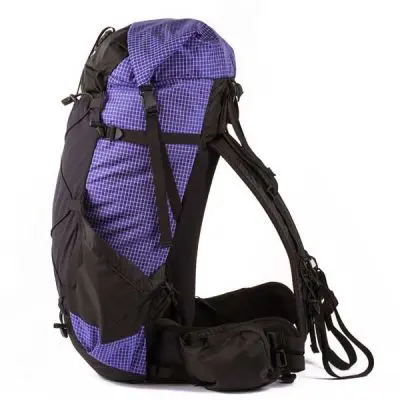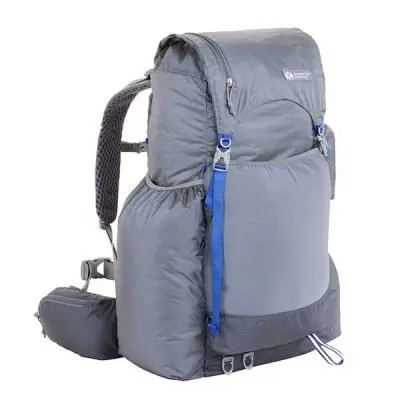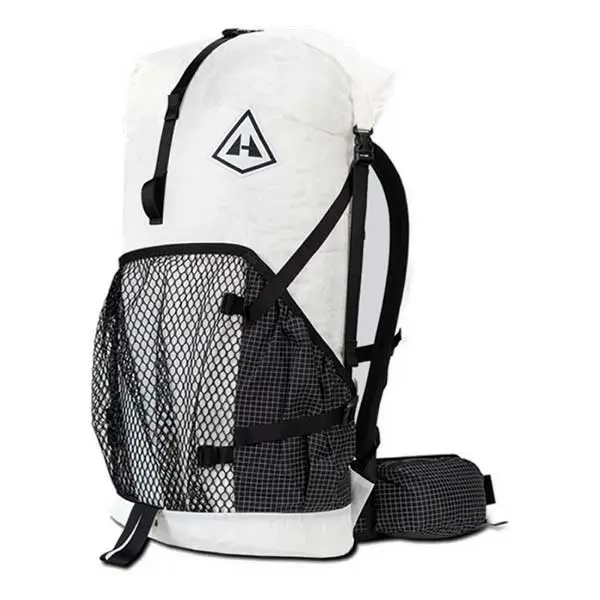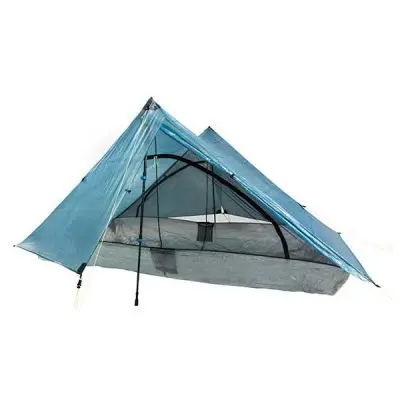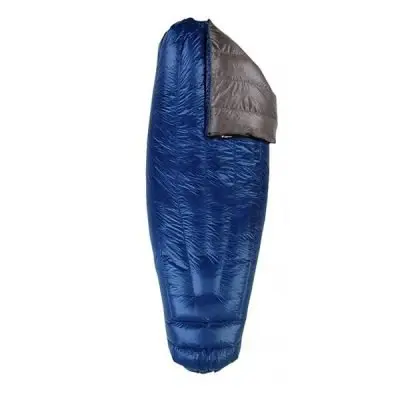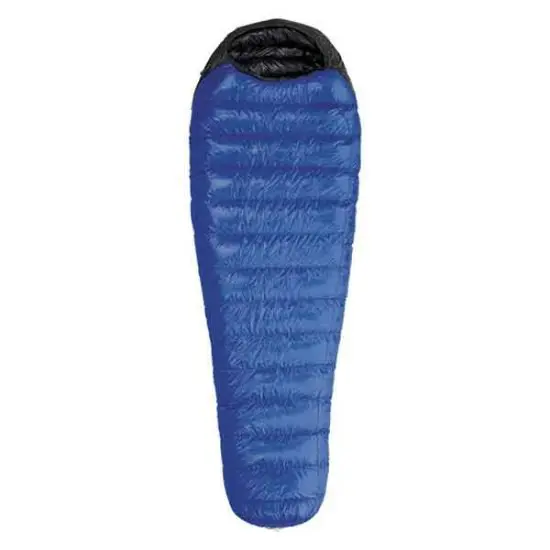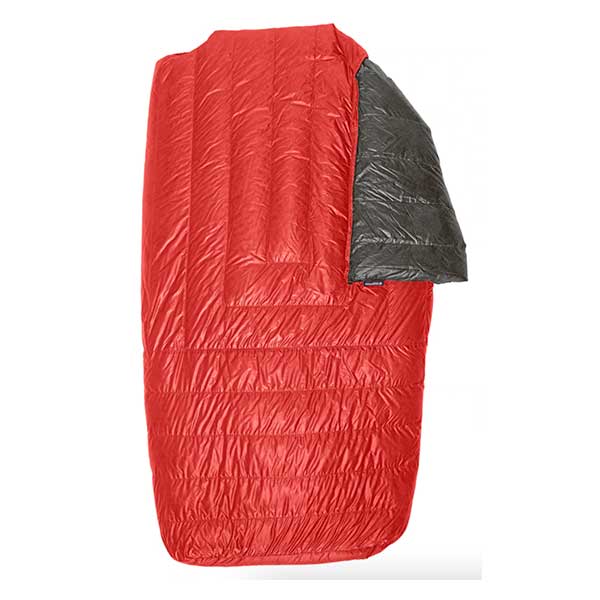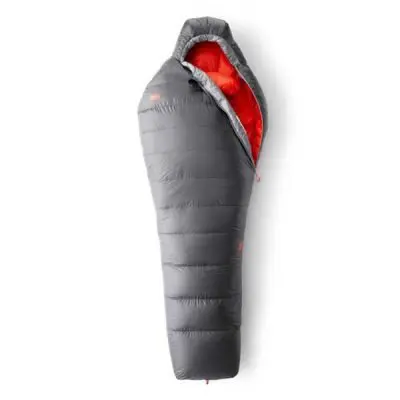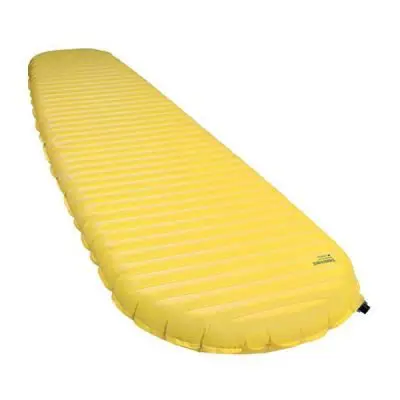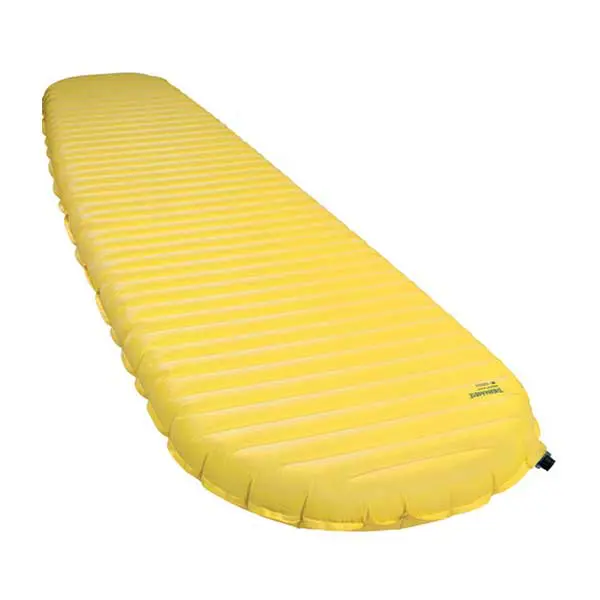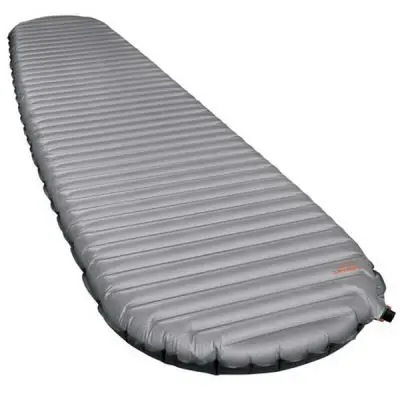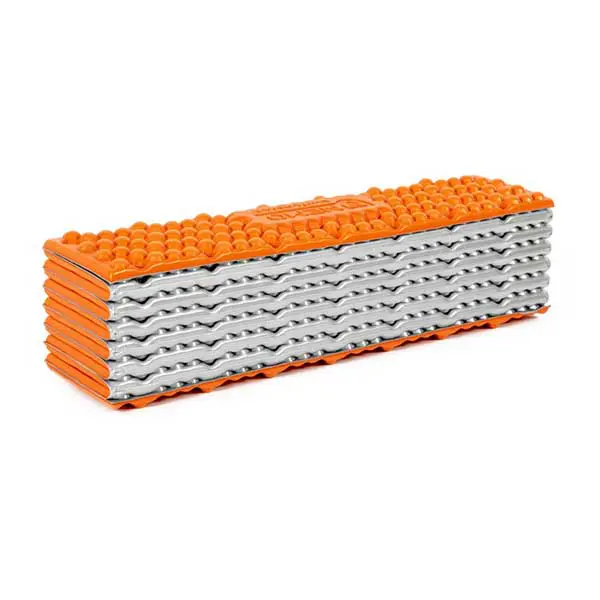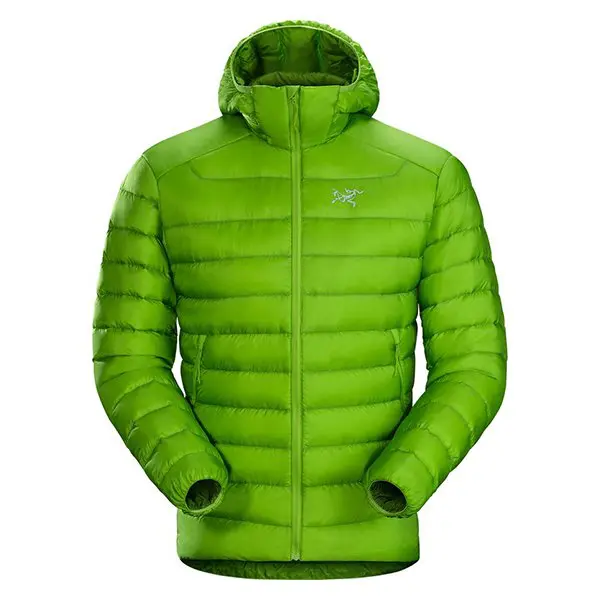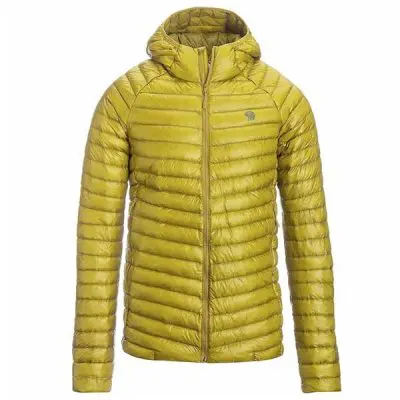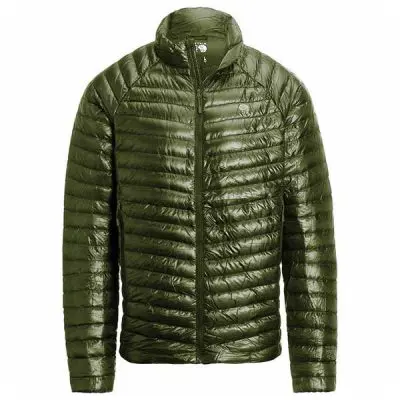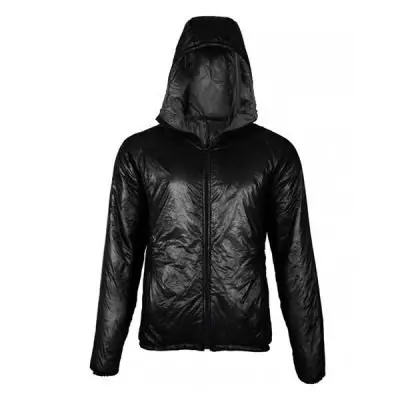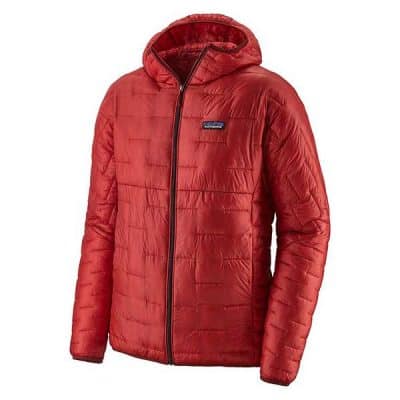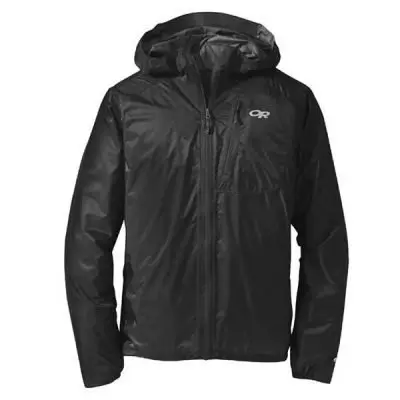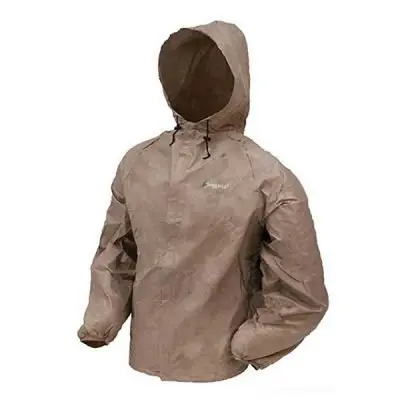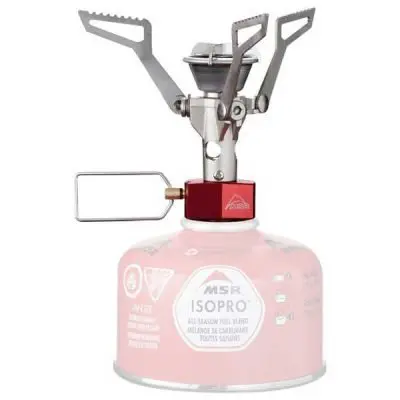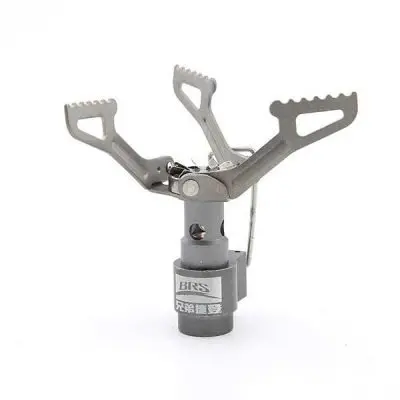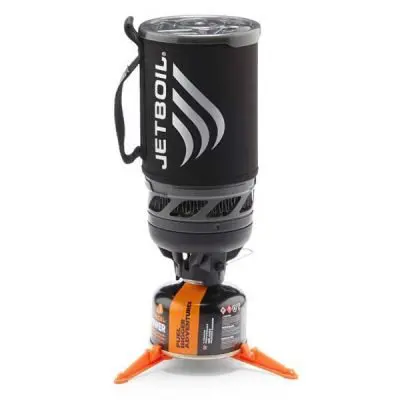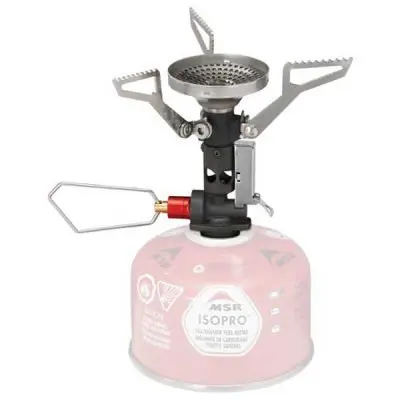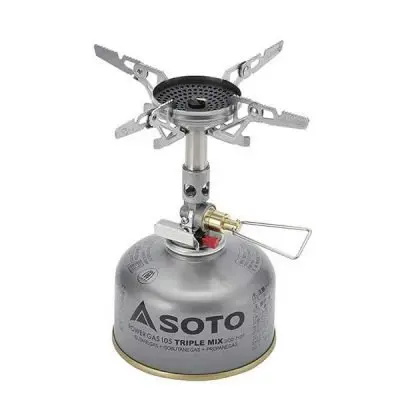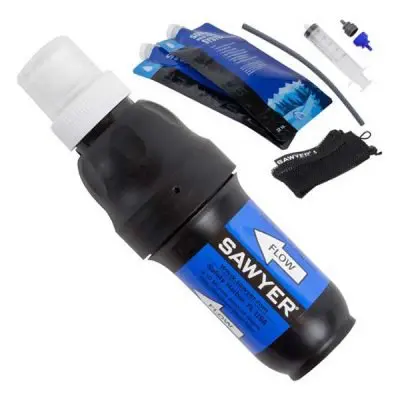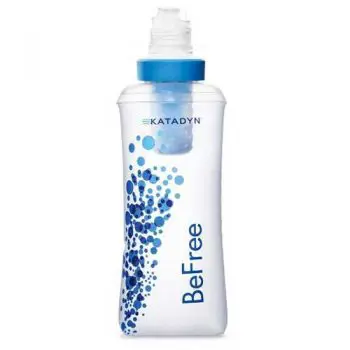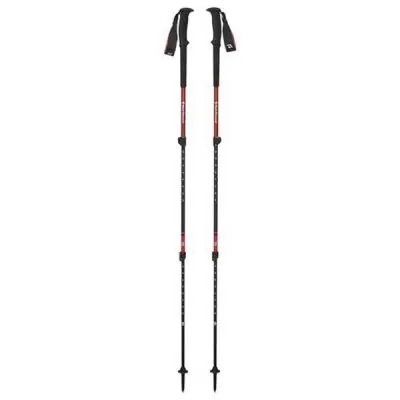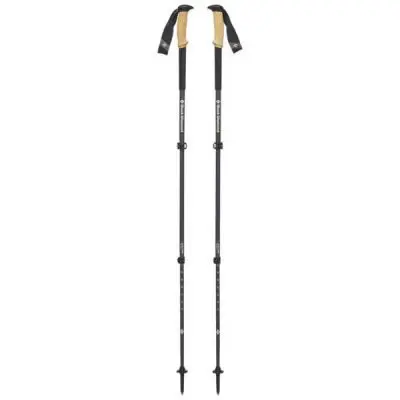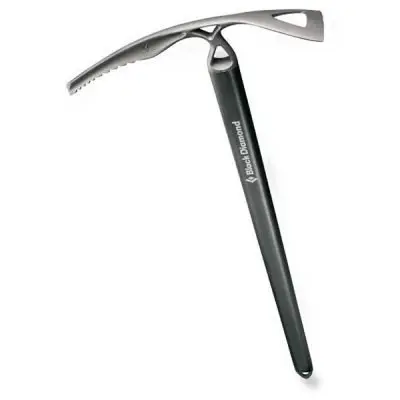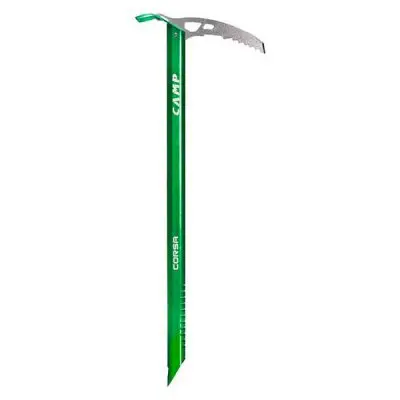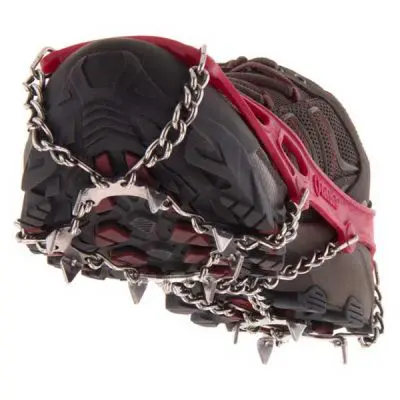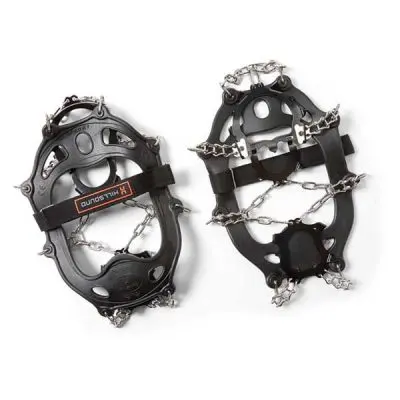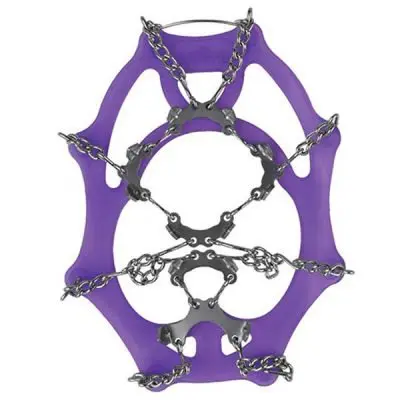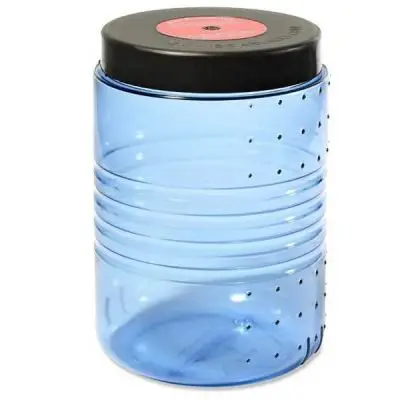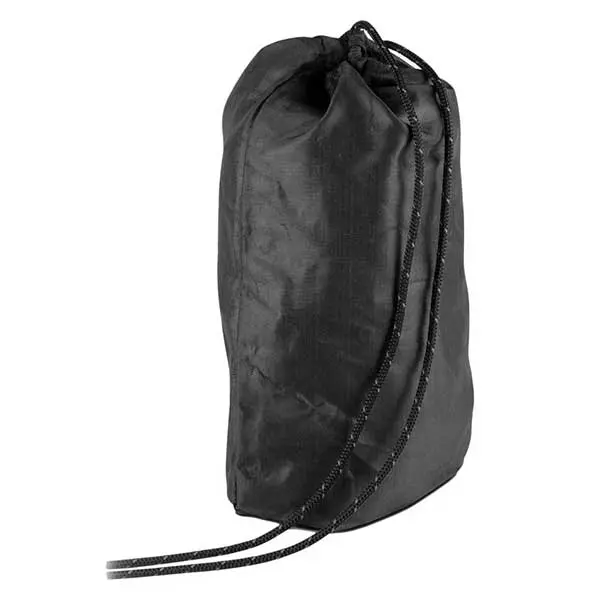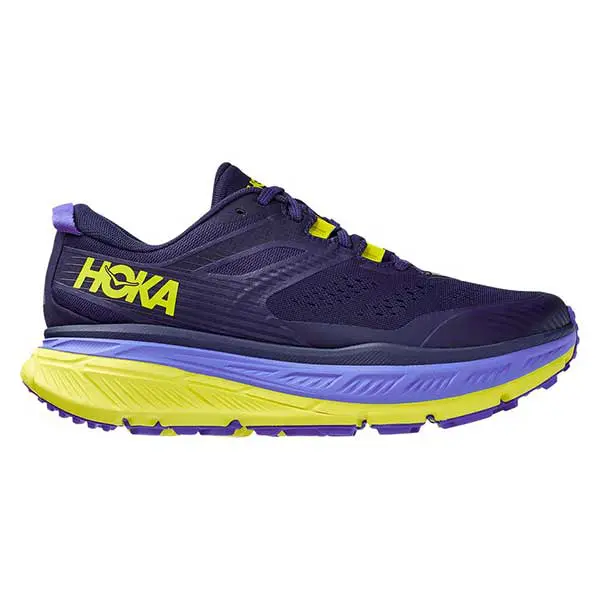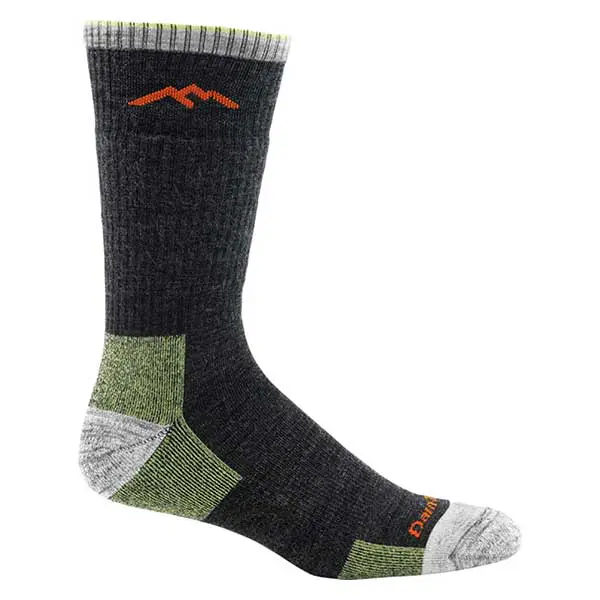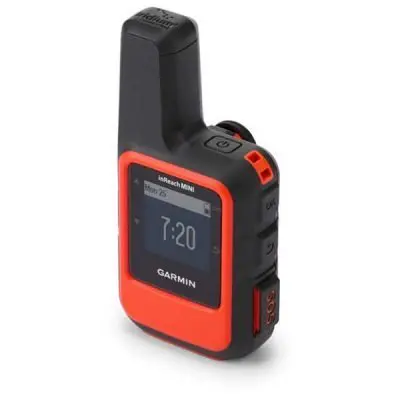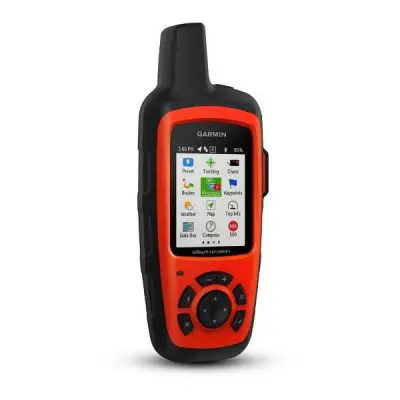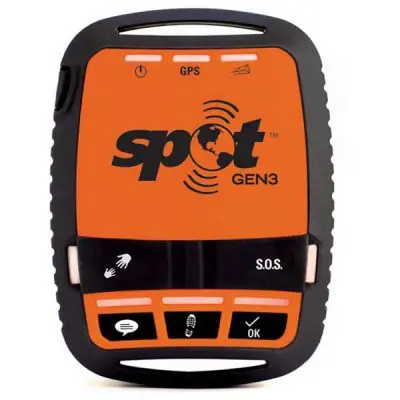In the third part of this year’s Continental Divide Trail Thru-hiker Survey, we take a deep dive into Continental Divide Trail hikers’ gear. CDT gear lists vary wildly between hikers and (spoiler alert) it’s impossible to find a perfect CDT gear list. That said, we can try.
I’ve organized this post in a way that I hope will give a comprehensive picture of what gear CDT thru-hikers are using. This post covers the most common gear, gear statistics based on different groups of hikers, hiker comments on gear, and finally, gear advice. The gear covered here includes backpacks, shelters, sleeping bags, sleeping pads, insulated jackets, rain jackets, stoves, water treatment, trekking poles, ice axes, traction systems, bear canisters, shoes, socks, fleeces, and PLBs.
I am sure that some of you will come up with comparisons you would like to see that I have overlooked. I hope to make this a useful resource for CDT hikers, so if there’s anything that you think is missing, please leave a comment below.
That being said, I hope you enjoy this year’s CDT Gear Guide brought to you by the CDT Class of 2020.

Notes on the data
- All weights (and for backpacks, capacity) for products below are for products in a size medium and/or regular unless otherwise noted. For ice axes, I used whichever available length was closest to 60 cm.
- This year we had 83 completed surveys – fewer than last year, but still only two short of our first Continental Divide Trail survey.
- Some responses have been sorted and colored to present the data in a friendlier manner (e.g. northbound vs. southbound responses).
- Not all CDT hikers meticulously document the stats of their thru-hike. The data is not going to be 100% accurate.
- I refer to survey respondents collectively as this year’s “class“. Remember, this is a sample and not a comprehensive survey of every CDT hiker who intended to hike or who did hike this year.
- If they recall only math-exam anxiety, it’s suggested you familiarize yourself with the words average, median (M), and standard deviation (σ).
- For stats requiring the length of the CDT for a calculation (e.g. average mileage per day over the course of the trail), I use 3,100 mi / 4,989 km (that said, almost nobody actually hikes this distance on the CDT).
- I will be releasing more detailed survey posts focused on CDT Resupply, CDT Horror Stories, and CDT Advice in the coming weeks. If you would like to be notified of new surveys, click here.
Labels differentiating hiker segments:
- THRU: Thru-hikers (all)
- THRU-0: Thru-hikers who did NOT complete the CDT
- THRU-1: Thru-hikers who completed the entire CDT
- NOBO: Northbound thru-hikers (all)
- NOBO-0: Northbound thru-hikers who did NOT complete the CDT
- NOBO-1: Northbound thru-hikers who completed the CDT
- SOBO: Southbound thru-hikers (all)
- SOBO-0: Southbound thru-hikers who did NOT complete the CDT
- SOBO-1: Southbound thru-hikers who completed the CDT
If no label has been appended to a data point, then I used all data collected (i.e. it also includes section hiker data).
The Most Common CDT Gear
This gear was the most commonly used by Continental Divide Trail hikers. Remember, this is the most commonly used gear – simply because something was common, this does not necessarily translate to it automatically being the “best” (or even good). That said, it probably does translate into it being cool – so there’s that.
Typically, I would first discuss the highest-rated gear used by Continental Divide Trail hikers, but because we don’t have a very large sample this year, I don’t think it would be fair to take the ratings of just a few hikers to reflect each piece of gear.
Most Common Gear List
- Backpack: Hyperlite Mountain Gear Windrider (31.82 oz | 902 g | $355)
- Shelter: Big Agnes Copper Spur HV UL1 (34 oz / 964 g | $380)
- Sleeping bag: Enlightened Equipment Revelation (20.88 oz / 592 g | $280)
- Sleeping pad: Therm-a-Rest NeoAir XLite (12 oz / 340 g | $185)
- Insulated jacket: Arc’teryx Cerium LT Down Hoodie (10.9 oz / 309 g | $379)
- Shell: Outdoor Research Helium II (6.4 oz / 180 g | $159)
- Stove: MSR PocketRocket 2 (2.4 oz / 68 g | $45)
- Water treatment: Sawyer Squeeze (3 oz / 85 g / $35)
- Trekking poles: Black Diamond Trail (20 oz / 567 g / $80)
- Ice axe: Black Diamond Raven Pro (13.5 oz / 383 g | $110)
- Traction device: Kahtoola MICROspikes (11 oz / 312 g | $70)
- Bear canister: BearVault BV500 (41 oz / 1.162 kg | $80)
- Shoes: Altra Lone Peak (21 oz / 595 g | $120)
- Socks: Darn Tough 1/4 Cushion (2 oz / 57 g | $18)
- PLB: Garmin inReach Mini (3.5 oz / 99 g | $350)
Total weight – Big 3 (pack, shelter, sleeping bag): 5 lbs 6.7 oz / 2.458 kg
Total weight – Big 4 (Big 3 + sleeping pad): 6 lbs 2.72 oz / 2.798 kg
All gear (minus snow gear/bear can)*: 7 lbs 12.8 oz / 3.539 kg
All gear^: 11 lbs 14.4 oz / 5.396 kg
*This does not include ice axe, traction, bear canister, poles, shoes, or socks
^This does not include poles, shoes, or socks
In addition to the items noted above, these total base weights (that is, a backpack’s weight minus food, water, and consumables – like poop paper) are missing gear (headlamp, extra clothing, electronics, etc.). It brings us over halfway to the year’s average starting base weight of 18 lbs / 8.165 kg. Also, the stove included in this list, the MSR PocketRocket 2, does not include the weight of a pot.
The total price of all this gear? $2,646 (this includes one pair of shoes). The average hikers spent before beginning their hikes? $1,173 (M = $1,000 | σ = $889). Clearly, most hikers had gear before beginning their plans for a CDT thru-hike.
Now, a detailed look at the most common pieces of gear in each of the following categories: backpacks, shelters, sleeping bags, sleeping pads, insulated jackets, shells, stoves, water treatments, trekking poles, ice axes, traction systems, bear canisters, shoes, socks, and PLBs.
Most Common CDT Backpacks
The Hyperlite Mountain Gear Windrider was the most common backpack on the Continental Divide Trail this year – up from the fifth-most common last year. It is a 31.82 oz / 902 g pack capable of carrying up to 55 L and 40 lbs / 18 kg of gear. It’s available in white or black (which is a bit heavier) and comes in three sizes (2400, 3400, and 4400).
| BACKPACK | PRICE | WEIGHT | LITERS | MAX LOAD | ACCESS |
|---|---|---|---|---|---|
| Hyperlite Mountain Gear Windrider | $345 | 31.82 oz / 902 g | 55 | 40 lbs / 18 kg | Top |
| ULA Circuit | $255 | 41 oz / 1.162 kg | 68 | 35 lbs / 16 kg | Top |
| Gossamer Gear Mariposa | $270 | 32.7 oz / 927 g | 60 | 35 lbs / 16 kg | Top |
| Hyperlite Mountain Gear Junction | $355 | 32 oz / 906 kg | 55 | 40 lbs / 18 kg | Top |
| Osprey Exos | $220 | 43.4 oz / 1.230 kg | 58 | 40 lbs / 18 kg | Top |
Most Common CDT Shelters
The Big Agnes Copper Spur HV UL1 was the most common shelter on the CDT this year. It’s a one-person, side-entry, 38 in / 96.5 cm freestanding shelter that costs $380. This was also the fifth-most common shelter on the CDT last year. It’s made from ripstop nylon and has DAC Featherlite NFL poles.
| SHELTER | PRICE | WEIGHT | PACKED SIZE | HEIGHT | FLOOR | FREESTANDING |
|---|---|---|---|---|---|---|
| Big Agnes Copper Spur HV UL1 | $380 | 34 oz / 964 kg | 5.5 x 17 in / 14 x 43 cm | 38 in / 96.5 cm | 20 ft² / 1.86 m² | Yes |
| Zpacks Duplex | $599 | 19 oz / 539 g | 7 x 13 in / 18 x 33 cm | 48 in / 122 cm | 28 ft² / 2.6 m² | No |
| Big Agnes Fly Creek HV UL1 | $330 | 33 oz / 936 kg | 4 x 19 in / 10 x 48 cm | 38 in / 96.5 cm | 20 ft² / 1.86 m² | Semi |
| Big Agnes Tiger Wall UL2 | $400 | 35 oz / 992 g | 5.5 x 18 in / 14 x 46 cm | 39 in / 99 cm | 28 ft² / 2.6 m² | Semi |
| NEMO Hornet 2 | $370 | 38 oz / 1.077 kg | 5.5 x 19.5 in / 14 x 50 cm | 39 in / 99 cm | 27.5 ft² / 2.55 m² | Semi |
Shelter Notes: For the weight of each shelter, I have used the packed weight – that is, the weight of the shelter including stuff sacks, guy lines, and stakes.
Most Common CDT Sleeping Bags
The Enlightened Equipment Revelation was the most common sleeping bag (quilt) on the CDT this year. The Revelation is highly customizable and comes in a variety of lengths, widths, temperature ratings, fill-powers, and colors. What’s the difference between the Revelation and the Enigma? The Enigma has a sewn footbox (i.e. the Revelation can be laid completely flat).
| SLEEPING BAG | PRICE | WEIGHT | TEMPERATURE | FILL | FILL WEIGHT |
|---|---|---|---|---|---|
| Enlightened Equipment Revelation | $280 | 20.88 oz / 592 g | 20°F / -6.6°C | 950-fill duck down | 14.41 oz / 409 g |
| Western Mountaineering UltraLite | $500 | 29 oz / 822 g | 20°F / -6.6°C | 850-fill goose down | 16 oz / 455 g |
| Enlightened Equipment Accomplice* | $455 | 36.75 oz / 1.042 kg | 20°F / -6.6°C | 850-fill duck down | 27.76 oz / 786 g |
| Marmot Helium | $412 | 33 oz / 936 g | 15°F / -9.4°C | 800-fill goose down | 20 oz / 565 g |
| REI Co-op Magma 15 | $379 | 36 oz / 1.021 kg | 17°F / -8.3°C | 850-fill goose down | 23.45 oz / 665 g |
*The Enlightened Equipment Accomplice is a two-person quilt.
Most Common CDT Sleeping Pads
The Therm-a-Rest NeoAir XLite was the most common sleeping pad among Continental Divide Trail hikers this year. This air pad has an R-value of 4.2, weighs 12 oz / 340 g, packs down to 4.1 x 9 in / 10 x 23 cm, and is 2.5 in / 6.4 cm thick. The Women’s version was the third-most common pad on the trail this year.
| SLEEPING PAD | PRICE | WEIGHT | R-VALUE | TYPE | PACKED SIZE | THICKNESS |
|---|---|---|---|---|---|---|
| Therm-a-Rest NeoAir XLite | $185 | 12 oz / 340 g | 4.2 | Air | 4.1 x 9 in / 10 x 23 cm | 2.5 in / 6.4 cm |
| Therm-a-Rest NeoAir XLite (Small) | $150 | 8 oz / 227 g | 4.2 | Air | 9 x 3.5 in / 23 x 9 cm | 2.5 in / 6.4 cm |
| Therm-a-Rest NeoAir XLite (Women’s) | $175 | 12 oz / 340 g | 5.4 | Air | 9 x 4.1 in / 23 x 10 cm | 2.5 in / 6.4 cm |
| Therm-a-Rest NeoAir XTherm | $215 | 15 oz / 425 g | 6.9 | Air | 9 x 4 in / 23 x 10 cm | 2.5 in / 6.4 cm |
| NEMO Switchback | $50 | 14.5 oz / 411 g | 2 | Foam | 20 x 5.5 x 5 in / 51 x 14 x 13 cm | 0.9 in / 2.3 cm |
Most Common CDT Insulated Jackets
The Arc’teryx Cerium LT Down Hoodie was the most common jacket among CDT hikers this year. The jacket uses 850-fill goose down with a hip-length back, nylon shell, with two zippered hand pockets, and one internal pocket. It weighs just 10.9 oz / 309 g and, like the rest of the five most common insulated jackets, it has a hood. Men’s / Women’s
| JACKET | PRICE | WEIGHT | INSULATION | HOOD | POCKETS |
|---|---|---|---|---|---|
| Arc’teryx Cerium LT Hoodie | $379 | 10.9 oz / 309 g | 850-fill goose down | Yes | 2 zippered hand / 1 internal zippered chest |
| Mountain Hardwear Ghost Whisperer 2 Hooded | $325 | 8.8 oz / 249 g | 800-fill goose down | Yes | 2 zippered hand |
| Mountain Hardwear Ghost Whisperer 2 | $300 | 8.3 oz / 235 g | 800-fill goose down | No | 2 zippered hand |
| Enlightened Equipment Torrid APEX Jacket | $170 | 8.4 oz / 238 g | Climashield APEX | Yes | 2 zippered hand |
| Patagonia Micro Puff Hoody | $299 | 9.3 oz / 264 g | 65-g PlumaFill 100% polyester | Yes | 2 zippered hand / 2 internal drop |
Most Common CDT Shells
The Outdoor Research Helium II was the most common shell (that’s a fancy name for rain jackets) on the CDT this year. It’s a 6.4 oz / 182 g jacket made with a 2.5-layer Pertex waterproof breathable laminate. There aren’t pit zips, and you have just a single zippered chest pocket. It’s a popular jacket for thru-hiking, but be warned – it also elicits a lot of negative feedback from hikers who must endure heavy storms with it. Men’s / Women’s
| SHELL | PRICE | WEIGHT | FABRIC | PIT ZIPS | POCKETS |
|---|---|---|---|---|---|
| Outdoor Research Helium II | $159 | 6.4 oz / 182 g | 2.5-layer Pertex waterproof breathable laminate | No | 1 zippered chest |
| Marmot PreCip Eco | $100 | 10.1 oz / 268 g | NanoPro Eco | Yes | 2 zippered hand |
| Frogg Toggs Ultra-Lite2 | $25 | 5.5 oz / 156 g | Three-layer polypropylene | No | None |
| Arc’teryx Zeta SL | $299 | 10.9 oz / 309 g | Gore-Tex (2-layer) with Paclite Plus | No | 2 zippered hand |
| Montbell Versalite | $200 | 6.4 oz / 182 g | Gore-Tex Infinium Windstopper | Yes | 2 zippered hand |
Most Common CDT Stoves
The MSR PocketRocket 2 was the most common stove on the Continental Divide Trail this year. It’s a 2.6 oz / 74 g canister stove that you need a lighter to ignite. The push-button start version, the MSR PocketRocket Deluxe, was the fourth-most common stove. The reported boil time for one liter of water is 3.5 minutes.
| STOVE | PRICE | WEIGHT | TYPE | DIMENSIONS | INTEGRATED POT | PUSH-BUTTON START |
|---|---|---|---|---|---|---|
| MSR PocketRocket 2 | $45 | 2.6 oz / 74 g | Canister | 7.25 x 5 x 4 in / 19 x 12.6 x 10.2 cm | No | No |
| BRS-3000T | $17 | 0.88 oz / 25 g | Canister | 1.97 x 1.18 x 1.3 in / 5 x 3 x 3.3 cm | No | No |
| Jetboil Flash | $100 | 13.1 oz / 371 g | Canister | 7.1 x 4.1 in / 18 x 10.4 cm | Yes | Yes |
| MSR PocketRocket Deluxe | $70 | 2.9 oz / 82 g | Canister | 3.3 x 2.2 x 1.8 in / 8.4 x 5.6 x 4.6 cm | No | Yes |
| SOTO WindMaster | $65 | 2.3 oz / 66 g | Canister | 2.5 x 1.3 x 1.8 in / 6.4 x 3.4 x 4.6 cm | No | Yes |
Most Common CDT Water Treatment
The Sawyer Squeeze was (by far) the most common Continental Divide Trail water filter this year – of the fourth year in a row. It’s a $35, 3 oz / 85 g hollow fiber filter that rids your drinking water of protozoa and bacteria (and floaties). It can be used with the Sawyer bags (included with the filter) or with compatible water bottles (Smartwater is the bottle of choice for many hikers). The Sawyer comes in two smaller sizes as well, the Sawyer Micro and the Sawyer MINI.
| WATER TREATMENT | PRICE | WEIGHT | TYPE | DIMENSIONS | MEDIUM | REMOVES |
|---|---|---|---|---|---|---|
| Sawyer Squeeze | $35 | 3 oz / 85 g | Squeeze/Straw | 2 x 5 in / 5 x 13 cm | Hollow fiber | Protozoa and bacteria |
| Aquamira | $15 | 3 oz / 85 g | Drops | N/A | Chlorine dioxide | Protozoa, bacteria, and viruses |
| Bleach | Cheap | N/A | Drops | N/A | Sodium hypochlorite | Protozoa, bacteria, and viruses |
| Katadyn BeFree | $40 | 2.3 oz / 65 g | Bottle | 11.3 x 3.5 x 2.8 in / 29 x 9 x 7 cm | Hollow fiber | Protozoa and bacteria |
Most Common CDT Trekking Poles
The Black Diamond Trail were the most common trekking poles on the CDT this year. They have an aluminum shaft, cork handle, a FlickLock locking mechanism, weigh 17.3 oz / 490 g, and collapse down to 25 in / 64 cm.
| TREKKING POLES | PRICE | WEIGHT (PAIR) | SHAFT MATERIAL | HANDLE MATERIAL | COLLAPSED LENGTH | LOCKING MECHANISM |
|---|---|---|---|---|---|---|
| Black Diamond Trail | $100 | 17.3 oz / 490 g | Aluminum | Cork | 25 in / 64 cm | FlickLock |
| Cascade Mountain Tech Carbon Fiber | $60 | 15.6 oz / 442 g | Carbon fiber | Cork | 26 in / 66 cm | External lever lock |
| Black Diamond Alpine Carbon Z | $190 | 15.8 oz / 448 g | Carbon fiber | Cork | 15.7 in / 40 cm | Z-Pole Speed Cone |
| Black Diamond Alpine Carbon Cork | $180 | 17.1 oz / 485 g | Carbon fiber | Cork | 24 in / 61 cm | External lever lock |
| Leki Corklite | N/A | 14.8 oz / 420 g | 6.5 HTS aluminum | Cork / Rubber | N/A | External lever lock |
Most Common CDT Ice Axes
The CAMP USA Corsa was the most common ice axe on the Continental Divide Trail this year. It’s the lightest ice axe on the list at 7.2 oz / 204 g and has an all-aluminum construction. The $120 axe has a straight shaft and comes in lengths of 50, 60, and 70 cm.
| ICE AXE | PRICE | WEIGHT | MATERIAL | LENGTHS | SHAFT SHAPE |
|---|---|---|---|---|---|
| Black Diamond Raven Pro | $110 | 13.5 oz / 383 g | Stainless-steel head and spike/aluminum 7075-T6 shaft | 55, 60, 65, 70 cm | Straight |
| Black Diamond Raven | $85 | 15.9 oz / 452 g | Stainless-steel head/aluminum shaft | 60, 65, 70, 75 cm | Straight |
| CAMP USA Corsa | $120 | 7.2 oz / 204 g | Aluminum head/shaft | 50, 60, 70 cm | Straight |
| Grivel G1 | $75 | 15.8 oz / 449 g | Carbon steel/Ergal 7075 aluminum | 58, 66, 74 cm | Straight |
Most Common CDT Traction Systems
The Kahtoola MICROspikes Traction System was the most common traction system on the Continental Divide Trail this year (in addition to being the highest-rated). It’s an over-the-shoe, spikes-on-the-bottom system that weighs 13.1 oz / 371 g. It comes in four sizes and has stainless steel spikes.
| TRACTION DEVICE | PRICE | WEIGHT | MATERIAL | SIZES |
|---|---|---|---|---|
| Kahtoola MICROspikes Traction System | $70 | 13.1 oz / 371 g | Stainless steel, elastomer | S, M, L, XL |
| Hillsound Trail Crampons | $70 | 15.7 oz / 445 g | Carbon steel, stainless steel, elastomer | S, M, L, XL |
| Snowline Light Chainsen Crampon | $60 | 8.57 oz / 243 g | Stainless steel, elastomer | S, M, L, XL |
| Kahtoola NANOspikes Traction System | $50 | 8 oz / 227 g | Rubber and tungsten carbide | S, M, L, XL |
Most Common CDT Bear Canisters
The BearVault BV500 was the most common bear canister on the Continental Divide Trail this year. It has an 11.5 L capacity and is made from polycarbonate (transparent blue plastic). The lid can be removed without any tools (or coins) and measures 12.7 x 8.7 in / 32 x 22 cm.
| BEAR CANISTER | PRICE | WEIGHT | CAPACITY | MATERIAL | DIMENSIONS |
|---|---|---|---|---|---|
| BearVault BV500 | $80 | 41 oz / 1.162 kg | 11.5 L | Polycarbonate | 12.7 x 8.7 in / 32 x 22 cm |
| Ursack Major | $85 | 7.6 oz / 215 g | 10.65 L | 100% UHMWP | 9.8 x 6.7 x 2.2 in / 25 x 17 x 6 cm |
Bear canister notes: Rocky Mountain National Park is the only place on the CDT where you’re required to have a bear canister. Just 22.1% of hikers brought bear-specific food storage.
Most Common CDT Shoes
The Altra Lone Peak was the most common shoe on the feet of Continental Divide Trail hikers this year. They cost $120 per pair, have a 0 mm heel-toe drop, and weigh 21 oz / 595 g per pair. Men’s / Women’s
| SHOES | PRICE | WEIGHT (PAIR) | HEEL-TOE DROP | WATERPROOF |
|---|---|---|---|---|
| Altra Lone Peak | $120 | 21 oz / 595 g | 0 mm | No |
| Salomon XA Pro 3D | $130 | 24 oz / 680 g | 11 mm | No |
| Brooks Cascadia | $130 | 21.4 oz / 607 g | 8 mm | No |
| Topo Athletic Terraventure | $120 | 21.6 oz / 612 g | 3 mm | No |
| HOKA ONE ONE Stinson | $160 | 23.4 oz / 663 g | 5 mm | No |
Shoe Notes: Even if you knew for certain that each pair of your shoes would last you 700 mi / 1,125 km, buying yourself four pairs of shoes at the start of the hike would be a risky decision – what if the shoes aren’t as comfortable as you thought? What if your feet swell? What if you die?
Remember, you can buy shoes using this thing called the internet and have them mailed ahead on the trail (to a post office, hotel, local outfitter, trail angel, etc.) once you know that you’re going to need a new pair. If you encounter an emergency situation, you can always buy locally or simply wait around for your shoes to show up in the mail.
Most Common CDT Socks
This is my first year collecting data on socks and the most common sock on the Continental Divide Trail is no surprise, it’s the Darn Tough 1/4 Cushion. They are made of 61% merino wool, 37% nylon, 2% Lycra spandex, have a medium cushion, cost $18 a pair, and have an unconditional lifetime guarantee. Do yourself a favor and get some. Men’s / Women’s
| SOCKS | PRICE | WEIGHT (PAIR) | MATERIALS | CUSHIONING |
|---|---|---|---|---|
| Darn Tough 1/4 Cushion | $18 | 2 oz / 57 g | 61% merino wool, 37% nylon, 2% Lycra spandex | Medium |
| Darn Tough Light Hiker Micro Crew Light Cushion | $21 | N/A | 56% nylon, 40% merino, 4% Lycra | Light |
| Darn Tough Hiker Boot Cushion | $25 | N/A | 64% Merino wool, 33% nylon, 3% Lycra | Medium |
Most Common CDT Personal Locator Beacons (PLBs)
The Garmin inReach Mini was the most common personal locator beacon on the Continental Divide Trail this year. It can be used for two-way messaging, tracking, and as an SOS device. It does not have a color display nor does it allow you to upload maps to the device (but you can use maps via the app). It weighs 3.5 oz / 99 g and requires a monthly (or annual) subscription to function at full capacity.
| PLB | PRICE | WEIGHT | MESSAGING | MAPS |
|---|---|---|---|---|
| Garmin inReach Mini | $350 | 3.5 oz / 99 g | Two-way | No |
| Garmin inReach Explorer+ | $450 | 7.5 oz / 213 g | Two-way | Yes |
| SPOT Gen3* | $150 | 5 oz / 142 g | One-way (presets) | No |
*The Spot Gen3 has been replaced with the Spot Gen4 which is said to have more tracking features, a new enhanced mapping interface, and improved water resistance.
Base Weights
Base weight. The thing that completely defines some hikers and that others have difficulty defining. Basically, how much your backpack weighs when fully loaded with your gear, minus food, water, and/or consumable weight.
You can find hikers that will tell you that the best gear is the lightest gear and that there’s no benefit to carrying any “unnecessary” weight in your pack. You can also find hikers that will tell you ultralight gear is little better than badly-sewn-together garbage and that having quality gear (without regard to weight) is the only way to live your best trail life.
Ultimately, yes, carrying a lighter pack is more enjoyable than carrying a heavy pack. However, not having the proper gear if/when you need it can quickly eliminate any benefit realized from having a lighter pack. The base weight for you is the one you’re the happiest carrying. Anyone who tries to tell you otherwise deserves to fall down stairs.
| THRU | THRU-1 | THRU-0 | |
|---|---|---|---|
| BASE WEIGHT (START) | 18 lbs / 8.165 kg | 15.5 lbs / 7.031 kg | 21.4 lbs / 9.707 kg |
| BASE WEIGHT (END) | 15.5 lbs / 7.031 kg | 14.2 lbs / 6.441 kg | 17.1 lbs / 7.756 kg |
| CHANGE (%) | 2.5 lbs / 1.134 kg -13.8% | 1.3 lbs / 590 g -8.4% | 4.3 lbs / 1.95 kg -20% |
Gear Stats
We’ve covered the most common gear and the base weights of hikers on the Continental Divide Trail this year, and now we’re going to discuss gear specifics.
Average Backpack Size
First, a bit about backpacks. Some of the best advice you can give anyone preparing for a thru-hike? Get out there with your pack on and hike (with a heavy load).
THRU
50.7
(M = 55 | σ = 10.7)
THRU-1
49.9
(M = 50 | σ = 11.2)
THRU-0
53.9
(M = 58 | σ = 9.7)
Hikers Using Fully Freestanding Shelter
What’s a freestanding shelter? It’s a tent that needs only its poles to be set up – no stakes required. This year’s most common shelter, the Big Agnes Copper Spur HV UL1, is freestanding. There are also shelters that are semi-freestanding, like the fourth-most common shelter, the Big Agnes Tiger Wall UL2. This means that it will stand on its own without stakes, but requires stakes to be properly set up.
Here’s the breakdown of which percentage of hikers were using a freestanding shelter (I counted semi-freestanding shelters as 0.5 in the calculation).
THRU
22%
THRU-1
48%
THRU-0
24%
Sleeping Bag Temperatures
All of the highest-rated and most common sleeping bags (and quilts) on the Continental Divide Trail this year were between 10°F and 20°F (-12.2°C to -6.7°C). Which bag will be best for you depends on a lot – how warm of a sleeper are you? Which sleeping pad do you have? Are you sleeping in your clothes? With another person? In a small tent? Big tent? With a dog? Sasquatch? Here’s what this year’s class had.
THRU
16.7°F
-8.5°C
(M = 20/-6.7 | σ = 7.4)
THRU-1
17.7°F
-7.9°C
(M = 20/-6.7 | σ = 7.1)
THRU-0
14.1°F
-9.9°C
(M = 20/-6.4 | σ = 8.3)
Stoves on the CDT
It may come as a shock to some of you, but not all hikers on the trail carry stoves. Yes, cheese, tortilla, and Sriracha combinations may be all you need to power your hiking machine (yourself) on the trail. Here’s what hikers had for stoves this year.
- 81.1% Carried a stove
- 16.2% Stoveless the entire trail
- 2.7% Started with a stove but went stoveless at some point

THRU
13%
Percentage of hikers who did not use trekking poles
THRU-1
80.5%
Percentage of hikers who did not use an ice axe
THRU-0
56.8%
Percentage of hikers who did not use a traction system
Luxury Items
Continental Divide Trail hikers obsess over their gear lists and what goes into their packs, but most everyone has something that could be considered a luxury item by someone else. Some people believe their phone to be an essential and multifunctional piece of gear while others may scoff at the idea of using one to take photos, listen to music, and use GPS in the wilderness. Here are the most popular “luxury items” on the trail this year.
- Battery pack 97.4%
- Pillow 55.3%
- Camp shoes 34.2%
- Journal 34.2%
- Sleeping bag liner 26.3%
- Towel 18.4%
- Massage ball 13.2%
- Town clothes 10.5%
- Fishing pole 7.9%
- Deodorant 5.3%
- Cards 5.3%
- Kindle 5.3%
- Book 2.6%
- Down pants 2.6%

Gear Advice
For the final section of the Continental Divide Trail gear guide, I have gear advice offered by this year’s CDT Class. Remember, that each of these suggestions comes from a single hiker and they do not all necessarily represent the views of the class as a whole.
- To future CDT hikers: don’t skimp on clothing. The CDT is colder and wetter than you might otherwise expect if you’ve hiked other fair-weather trails like the CDT. I started with both a fleece and a “snow skirt,” thinking I might not use them. Then I basically used them every single day of the hike.
- I was happy to have a ULA rain skirt.
- My husband brought the REI Quarter Dome SL Tarp which meant we were not tent bound for the days it rained once we had made camp. Nice not to have to cook in the rain.
- For the love of all that’s sacred, invest in a lightweight wind shell! I only wore my rain jacket maybe 20 times total in 5 months, whereas I wore my wind shell almost every day. It’s worth 2 or 3 oz / 58g or 85 g.
- A hammock works quite well on this trail. I just had to use my backup pad from the Mexico border to Silver City, and in the Basin up north (in Wyoming).
- While I don’t like carrying rain pants, I picked up a pair from Montbell and then sent home my thermal pant layer. I would recommend carrying rain pants on the CDT.
- Spend the money for the best gear. You’re going to live with it for 4 to 5 months, so don’t have bad gear. Read up on what successful hikes use- and go with those choices.
- Bring bug repellent with DEET!
- Topo Terraventures were amazing! Got over 850 miles (1,368 km) each from 2 different pairs!
- As a southbounder, I found the nightly temps fairly warm in July through mid-August. In Colorado, the nightly temps dropped significantly. In New Mexico, the temps could be 85 or 90°F (29 to 32°C) during the day, and around 32°F (0°C) at night.
- Rocky Socks (GORE-TEX liners that go over your socks) made the San Juans tolerable given the snow and slush. A great lightweight piece of gear to keep your feet dry.
- Liked the hiking umbrella.
Support the CDT Survey
I get a lot of people asking every year how to support the surveys and beyond sharing them with your close-knit bubble of weird hiker friends, the best way to support the Continental Divide Trail is to donate on Patreon. You’ll get access to exclusive posts, discount codes, live streams, and super extra cool stickers so that everyone will know how cool you are.
If you’re not into Patreon, that’s cool, you can always Venmo @halfwayanywhere or PayPal [email protected]
This is not expected. The data collected in the CDT Survey will always be free and accessible to everyone who wants/needs it. That said, your support is very much appreciated and helps to pay the website (and survey) bills.



If there is anything you can think of that would make this information more useful (or any more gear-related cross-referencing you would like to see), then please leave a comment below and let me know.
Continental Divide Trail Survey Collection
This page may contain affiliate links, which means I may receive small commissions for purchases made via these links at no additional cost to you. This helps to pay the bills and keep the site up and running. Thank you for your support!


